Angle Relationships
There are many angle relationships in the math world. When there are two parallel lines crossed by a transversal and two angles are vertical to each other they would be called vertical angles. When there are two angles that are in the same side of the transversal and inside of the parallel lines, they would be called same side interior angles. When they’re in the same side but exterior to the transversal and parallel lines, they would be called same side exterior. Alternate interior angles are when two angles are in the interior of the parallel lines, but on the opposite side of the transversal. Alternate exterior angles are when they’re placed in the exterior of the parallel lines and opposite of the transversal. Corresponding angles are when there are two angles and there is one in the interior and one in the exterior and are placed in the same side of the transversal. Also, when finding the angle in the outside, angles BCD are always going to be congruent to A added with B.
Angles in a Triangle
The triangle sum theorem shows that when you have a triangle the angles will always add up to be 180 degrees. It doesn’t necessarily have to be a certain triangle, the 3 angles of any triangle type will always add up to 180 degrees. When trying to find the missing angle of a triangle you just have to add the two angle degrees already shown and subtract them from 180 to get your answer.
Triangle Inequality
With triangle inequalities the large length is larger than the small and medium lengths combined. The sets of three side lengths that did not form triangles are different from the sets of side lengths that did form triangles because the large length is always larger than the two smaller ones combined. Three side lengths will not make a triangle if the large length is bigger than the small and medium length combined. Three side lengths will make a triangle if the areas are somewhat close to each other.
Triangle Side-Length Patterns
There is some kind of pattern with triangle side lengths. If 3 squares have sides that make an acute triangle, the sum of the areas of the 2 small squares would be bigger than the large length’s area. If 3 squares have sides that make an obtuse triangle, the sum of the areas of the 2 small squares would be smaller than the large length’s area. If 3 squares have sides that make a right triangle, the sum of the areas of the 2 small squares would be equal to each other.
Square Roots
What is a square root? A square root is the opposite of squaring, you’re basically finding the number that has been squared to get the other number. Sometimes squared numbers aren’t always squared by whole numbers, sometimes there can be decimals. In order to find the missing number, or the number you have to square to get your number, you have to pick two numbers you can square to find a number close to yours. When you find that range of numbers pick where the number is closer to, if it’s close to the highest number you would use the decimals .6 to .9, if it’s closer to the lower number you would use the decimals .1 to .4. If it’s in the middle you use the decimal .5. After this you make a guess and check to see which number you created is somewhat close to your number. You then find the closest number and you now have a close estimation of your number.
Pythagorean Theorem
The Pythagorean Theorem shows how there is a relationship between side lengths of a right triangle. A right triangle always consists of two legs and a hypotenuse (longest length). In order to find the missing length of the hypotenuse, you first have to square the lengths of the 2 legs in order to find its area. Once you square it, you add the two areas and then take the square root of that number in order to find the missing value of the hypotenuse. In order to find the missing length of a leg, you have to square the hypotenuse and the other leg in order to get its area. Once you’ve done that, you actually subtract the value of the leg from the hypotenuse. After that, you get the square root of that number created to get the missing value of the leg.
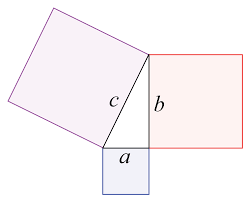



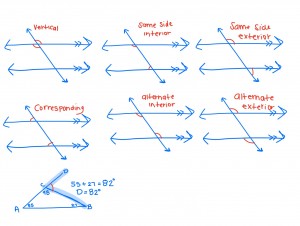
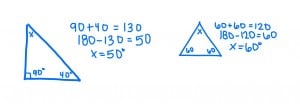
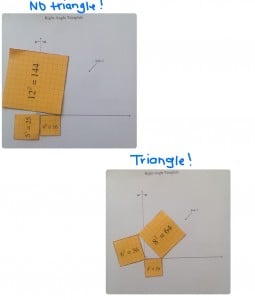
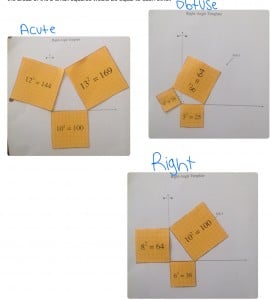
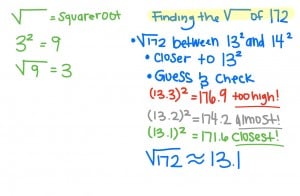
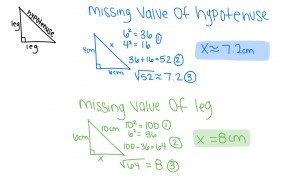
Leave a Reply